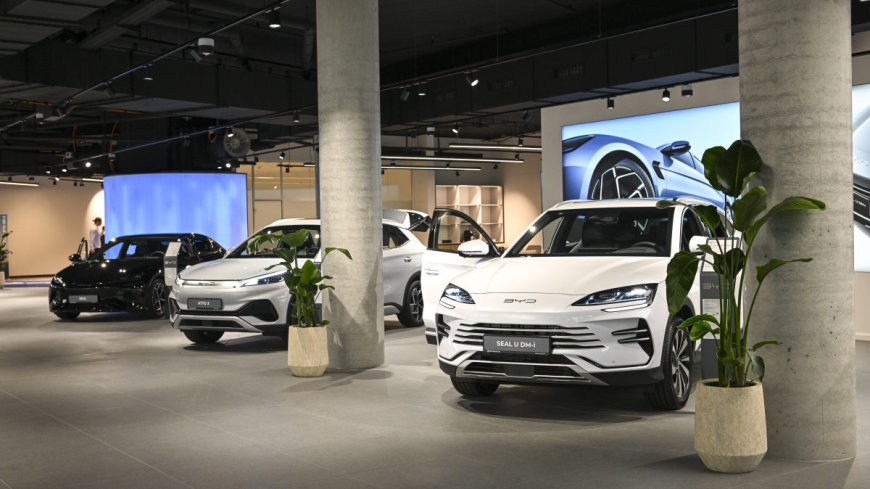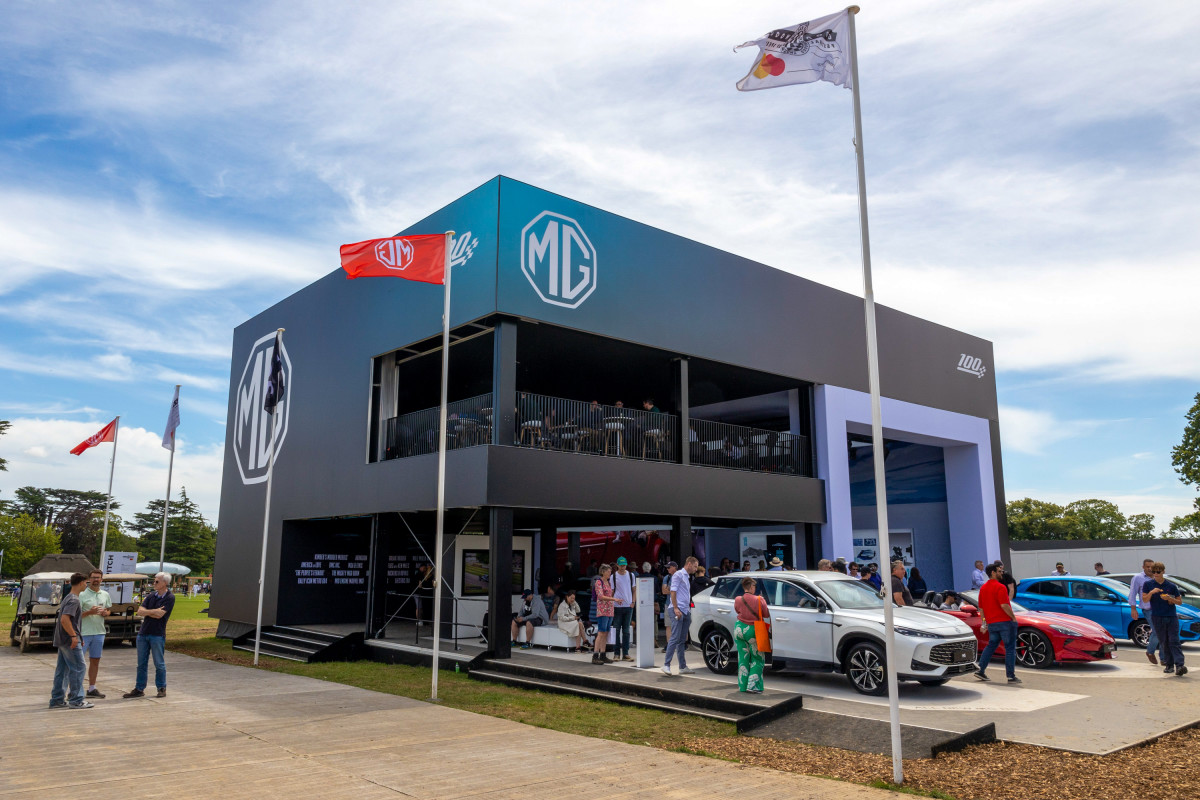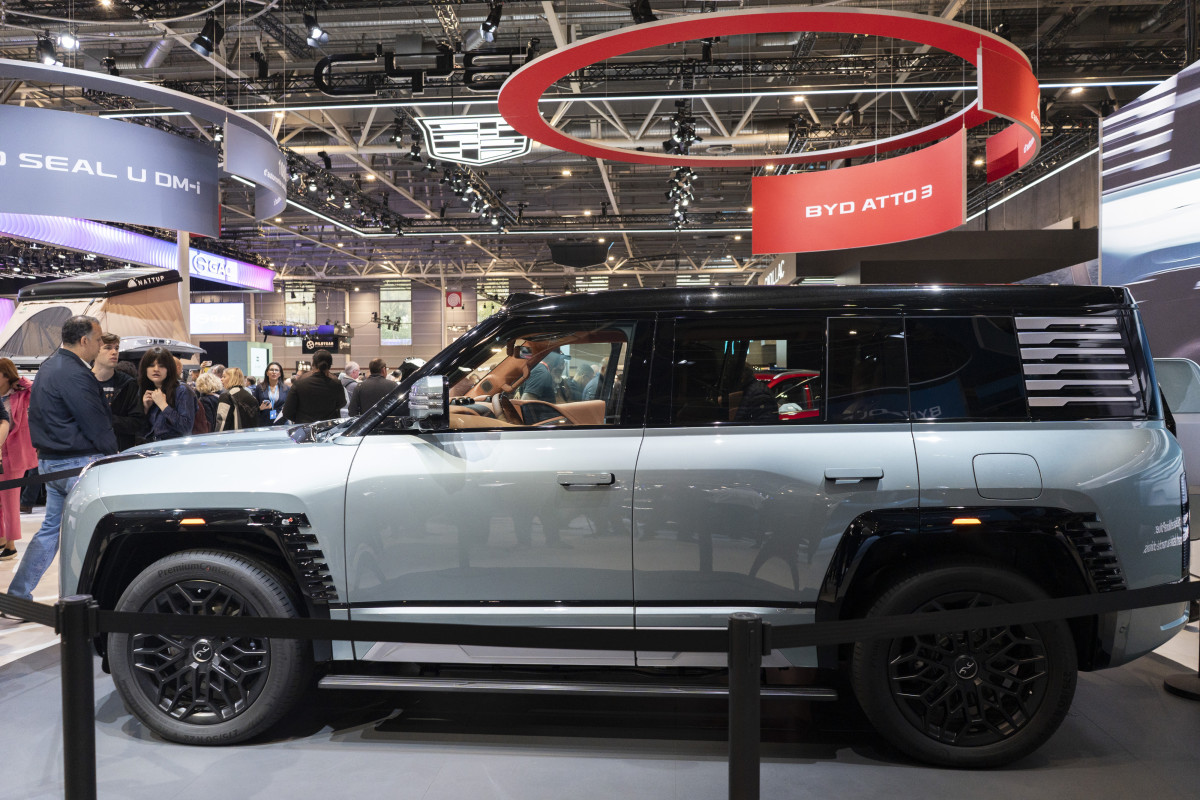Chinese EV makers hit hard by EU tariffs
Rising tariffs across Europe could handicap Chinese automakers as they seek to grow outside their home country.

Chinese automakers have hit a significant roadblock in Europe. The European Union’s new tariffs, which add up to 35% to the cost of importing electric vehicles (EVs), have dented Chinese brands' market share.
The new tariffs are the latest move in a growing push to limit Chinese-made electric vehicles in the EU. European automakers have struggled to compete with hyper-affordable Chinese vehicles in their home country, where they’re able to undercut foreign automakers thanks to state-backed funding. But, as new tariffs erase that discount for European consumers, Chinese automakers are working to maintain their grip across the continent.
Related: Toyota's big win: $4.5M to revolutionize EV battery production
A sharp reversal in the trend
The latest figures reveal the impact of the EU’s tariffs on Chinese EV manufacturers. In November, Chinese automakers captured just 7.4% of Europe’s EV market, a noticeable drop from 8.2% in October and their lowest share since March, according to automotive researcher Dataforce.
View the original article to see embedded media.
The tariffs, implemented at the end of October, were introduced following an EU investigation that concluded state subsidies had given China’s EV industry an unfair edge. These new tariffs come on top of an existing 10% import tax, with the overall tariff rates varying depending on the automaker’s cooperation with the investigation and the level of state support received.
Brands like BYD and SAIC’s MG brand have felt the sting of these changes. MG, the British sports car company turned SAIC subsidiary, has long been a leader among Chinese automakers in Europe, but saw a staggering 58% drop in registrations compared to the same period last year, according to research firm Jato Dynamics.
Related: What Honda’s next electric SUV might look like?
Where MG falters, BYD Gains
While MG struggles, BYD is finding ways to weather the storm. The company recorded 4,796 vehicle registrations in Europe in November—more than double its numbers from a year earlier. Unlike MG, which has been hit with tariffs totaling 45%, BYD appears to be better positioned to adapt to the shifting landscape.
View the original article to see embedded media.
“BYD is taking over the market while MG is taking major setbacks,” said Julian Litzinger, an analyst with Dataforce. Notably, nearly 80% of BYD’s registrations were attributed to private and fleet customers, signaling robust demand despite higher costs.
Chinese automakers in familiar territory
The EU’s tariffs highlight growing protectionism aimed at shielding local automakers from international competition. Europe’s automotive sector employs hundreds of thousands of workers and is grappling with the transition from combustion engines to electric drivetrains. Lower battery costs have historically given Chinese automakers a pricing advantage, but the EU’s actions aim to level the playing field.
This isn’t the first time Chinese automakers have faced resistance abroad. They’ve largely been shut out of the U.S. market, and their global EV exports dropped 19% year-over-year in November, including a 23% decline to the EU, according to Chinese customs data. The shift has forced Chinese manufacturers to reassess their strategies as they navigate these new challenges.
Related: Audi factory scheduled to close, and these models are going with it
Registrations surge in England
The impact of the tariffs has been uneven across Europe. In Germany and France, two of the region’s largest automotive markets, EV registrations from Chinese manufacturers more than halved in November compared to a year earlier. However, the UK, which is no longer part of the EU and hasn’t adopted the new tariffs, saw a 17% year-over-year increase in registrations of Chinese EVs.
A slowing shift toward EVs
The broader EV market has shown signs of slowing down in 2024, with adoption becoming more unpredictable globally. Automakers are rethinking everything from model lineups to plant locations in response to shifting consumer demand and geopolitical pressures. For Chinese automakers, localizing production within Europe is seen as a long-term solution to avoid import tariffs. However, establishing manufacturing facilities in the region is a time-intensive process that won’t yield immediate results.
Related: Toyota GR Corolla TC races into the 2025 TC America Series
The next steps for automakers
The challenges faced by Chinese EV makers in Europe are emblematic of the broader difficulties facing the global auto industry. Protectionist measures, evolving consumer preferences, and the high cost of EV development have created an uncertain situation that makes doing business from one country to the next difficult.
Some companies are exploring partnerships to share costs and strengthen their competitive positions. For example, Nissan and Honda are officially considering a merger to bolster their EV capabilities. Similar collaborations could be a path forward for other automakers navigating difficult economic regions.
Final thoughts
The EU’s tariffs may have blunted China’s push into Europe, but they haven’t completely derailed it. As automakers adjust their strategies, the competition for the future of EVs in Europe remains fierce. The coming months will reveal whether Chinese brands can overcome these obstacles or if they’ll be forced to scale back their ambitions in one of the world’s most critical EV markets.
Related: 2025 Ford Ranger: 4 reasons to love it, 2 reasons to think twice











































